No country for pacifists | What Operation Sindoor reveals about changing opinions on the right response to conflict

On May 7, India woke up to ‘Operation Sindoor’, a series of precision strikes by the armed forces at nine sites in Pakistan and Pakistan Occupied Kashmir. This was in retaliation to the terrorist attacks in Pahalgam on April 22, in which 25 Indians and one Nepali citizen, mostly tourists, were killed.
This was the same week that a report on the Indian Wealth Divide revealed that most of the country earns so little that an annual income of just ₹2.9 lakh puts you in the top 10%. It came just two months after a venture capital company published a report that out of the 140 crore Indians, only the top 10% have enough discretionary money to spend on non-essential items.
That same evening, during the mock drills announced by the Ministry of Home Affairs to check if the country was prepared against “new and complex threats”, instead of staying in during the blackout and learning to hide their locations, many Indians thronged the streets and burst firecrackers — just like they would to celebrate an IPL cricket match victory. Meanwhile, street vendors, part of the bottom half of the Indian population, whose national income has fallen from 22% to 15% between 1990 and 2025, were made to prove their patriotism by shutting shop for the mock drills and giving up their daily wage.
A work-from-home war
That night and the following two days, most Indians fought a work-from-home war. Content creators and news channels threw a barrage of disinformation, reporting how India had captured Lahore, Karachi and even Islamabad. And how, many Indian cities were under attack too.
There were visuals of panic buying, throngs at ATMs to withdraw cash, and jammed train stations and bus stations as migrant workers rushed to return to their hometowns. Simultaneously, cross-border shelling and drone attacks were killing civilians, officials, soldiers, and causing the destruction of houses, property and livestock in Poonch, Ferozepur, Uri, Jammu, Srinagar, Rajouri, Samba and other border districts. The villagers there were displaced and looking for hideouts. But people sitting afar, experiencing the virtual war — trained to dehumanise others by rationalising abuse of those on the socio-economic margins because of their class, caste or religion — dismissed it as ‘collateral damage’ in the war against terror.

“There is a concerted attempt to whip up this [war mongering] response and now we have become used to responding in this way. In 2008, when the 26/11 attacks happened in Mumbai, some people asked to use other methods than war — which was also what the then government wanted. The present government does not have the same approach.”Srinath RaghavanAcademic and former Indian army official
Common sense was thrown for a toss. Demanding preventive instead of combative approach in conflict became unpopular. Some of the WhatsApp users peddling fake news were now baying for blood and the escalation of military action by using war gaming language: morale, strategy, tactics, terrain, artillery, victory conditions, order of battle, zeroed in. Some even advocated the use of nuclear weapons to destroy Pakistan in a few minutes.

There was a clear shift in public opinion and expectations on what is the right response to conflict — which had earlier acknowledged that escalation of armed actions causes losses to all, economically, socially and morally.
As Srinath Raghavan, an academic and former Indian army official, who has deeply researched India’s strategic history, says, “War is a continuation of politics.” He notes that the chest-thumping and bloodlusting response to conflicts has been a general trend in the last decade. Case in point: Prime Minister Narendra Modi stating on multiple occasions that India’s official policy is to hit her enemies inside their territories — something he recently repeated, ‘Ghar mein ghus-ghus kar marenge.’
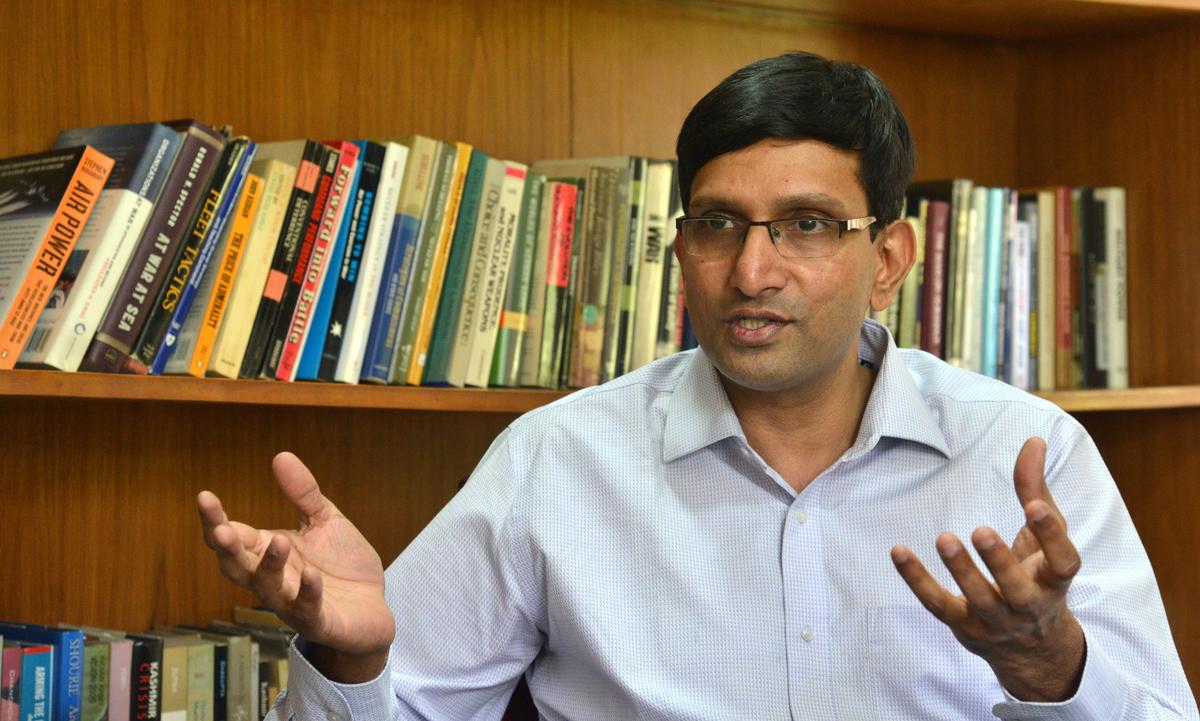
Srinath Raghavan
| Photo Credit:
R.V. Moorthy
According to Raghavan, India saw the same war mongering response in the surgical strikes of 2016 and during the 2019 Balakot air strikes after the Pulwama attack. “There is a concerted attempt to whip up this response and now we have become used to responding in this way. In 2008, when the 26/11 attacks happened in Mumbai, some people asked to use other methods than war — which was also what the then government wanted. The present government does not have the same approach.”
Blow to the economy
Studies reveal that the 10 most conflict-affected countries in the world such as Afghanistan, Syria, Iraq, and Venezuela lost, on average, 41% of their economic output as a result of violence. It is estimated that the 1999 Kargil war cost India roughly ₹15 crore per day. Escalation of violence could cause a food crisis or famine, like in Gaza, or even impact the IT infrastructure that facilitates WiFi-enabled virtual wars.
In this light, the common-sense response of the people would have been to demand an end to the war, but anyone who tried to publicly say ‘no’ to war was deemed not just a traitor and terror supporter, but was also threatened with dire consequences. Ritu Sinha, a software techie in Hyderabad, says, “I refuse to marry a person who asks for de-escalation. It shows the weakness of that man’s character.” When asked about diplomacy and other measures to handle terrorism and cross-border conflict, she responds that “saying no to war is discouraging and disrespecting the Indian army, and only a terror apologist would say that”.
Raghavan, however, stresses that Indians of this generation are lucky that they have not seen a large-scale war; they have only seen localised military problems in specific areas — where the people of that region have dealt with the consequences and not the entire country. “People should not assume that wars are re-enactments of movie scripts. Wars are not a trivial matter, and we have to be mindful of the consequences.”

“After the 26/11 attack, the then Home Minister Shivraj Patil had to resign, but no such demands are being made by the Opposition parties this time.”Ramachandra GuhaHistorian and writer
When politicians unite
In this war frenzy and mass hysteria, hardly any political party has called for peace. Historian and writer Ramachandra Guha points out that jingoism is emotionally overpowering, and that people forget their own plight. Now the public calculation is that “war is bad for us but worse for Pakistan”. He also reminds: “After the 26/11 attack, the then Home Minister Shivraj Patil had to resign, but no such demands are being made by the Opposition parties this time.”
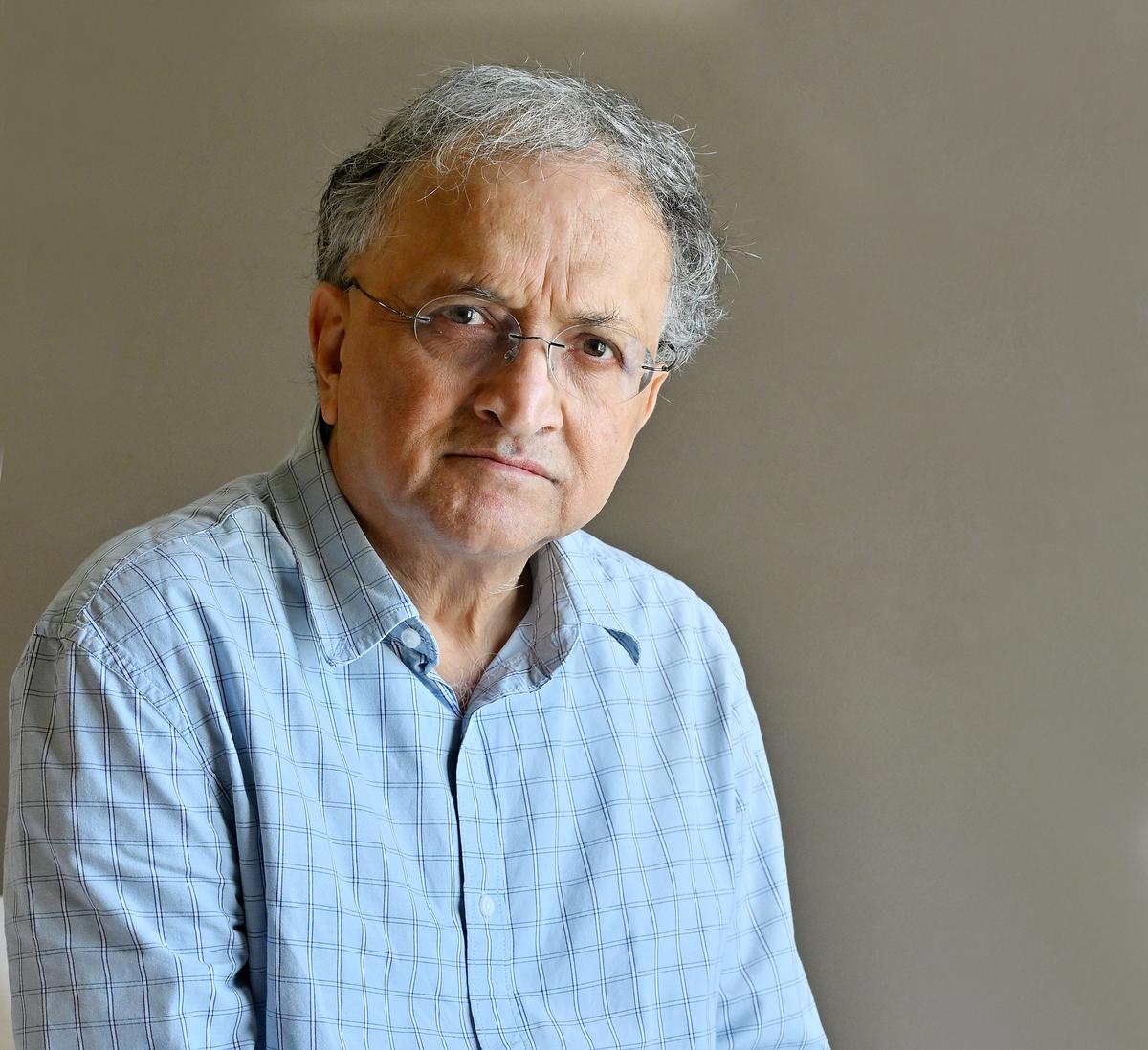
Ramachandra Guha
| Photo Credit:
R. Ravindran
In fact, parties across the political spectrum, be it Right, Centre or Left, have supported military actions. They are desperate to prove their patriotism. While participants of anti-war peace rallies in Thrissur and Kolkata faced a crackdown by the state governments in Kerala and West Bengal (under the Communist Party of India and Trinamool Congress, respectively), the rally held in support of the armed forces by Tamil Nadu Chief Minister M.K. Stalin, from the Dravida Munnetra Kazhagam Opposition coalition, was allowed thousands of participants.
The crucial question on the colossal intelligence failure that led to the barbaric terror attack in Pahalgam is no longer present in public discourse. Peace activists believe that in times of propaganda, dumbing down of intellect, and herd mentality, there is a shrinking of space for dialogue. Arundhati Dhuru, convener of the National Alliance of People’s Movements, recounts that when she organised Indo-Pak peace missions in the late 90s after Pokhran, Indian schools hosted Pakistani delegations. “They were sceptical, [Pakistanis] were still ‘they’, but we had an openness to listen, talk and sit together,” she recalls. “Now, it is no longer possible. You could be lynched by your neighbour for saying no to war.”
But, at the same time, “pitting yourself against majority pro-war sentiment is not cowardice,” reminds Ravi Nair, executive director of the South Asia Human Rights Documentation Centre. “Pacifism is an act of courage. It is an informed choice.”

Where is the independent thinker?
In the absence of in-person dialogues and the presence of hate spewing content on smartphones, art could be a potent tool to counter war propaganda. For decades, artists have encouraged peace with their work globally. But it is not so in contemporary India.

“In the past decade, people have become more zombie-like, they think less for themselves and rely on what they see on social media. It requires you to be an independent thinker and use your common sense to oppose killings, war, and violence.”Orijit SenArtist
Within two days of Operation Sindoor, there was a rush by entertainment companies to register the copyright of the name, as if it were a product launch and not a military operation. It is not surprising at a time when movies with slanted, sectarian, and inaccurate facts about the past and present — some of them glorifying violence and war — have been rewarded commercially and by the government.
Orijit Sen, a graphic artist and designer, says, “In India, artists are no longer voices of dissent. This feeling that the government will come after you is everywhere. There is an overall atmosphere of fear among everyone, including artists.” He adds that there is a manufactured mass hysteria among people where emotions are ripped up through propaganda-generating factories of the ruling dispensation. “In the past decade, people have become more zombie-like, they think less for themselves and rely on what they see on social media. It requires you to be an independent thinker and use your common sense to oppose killings, war, and violence,” says Sen.
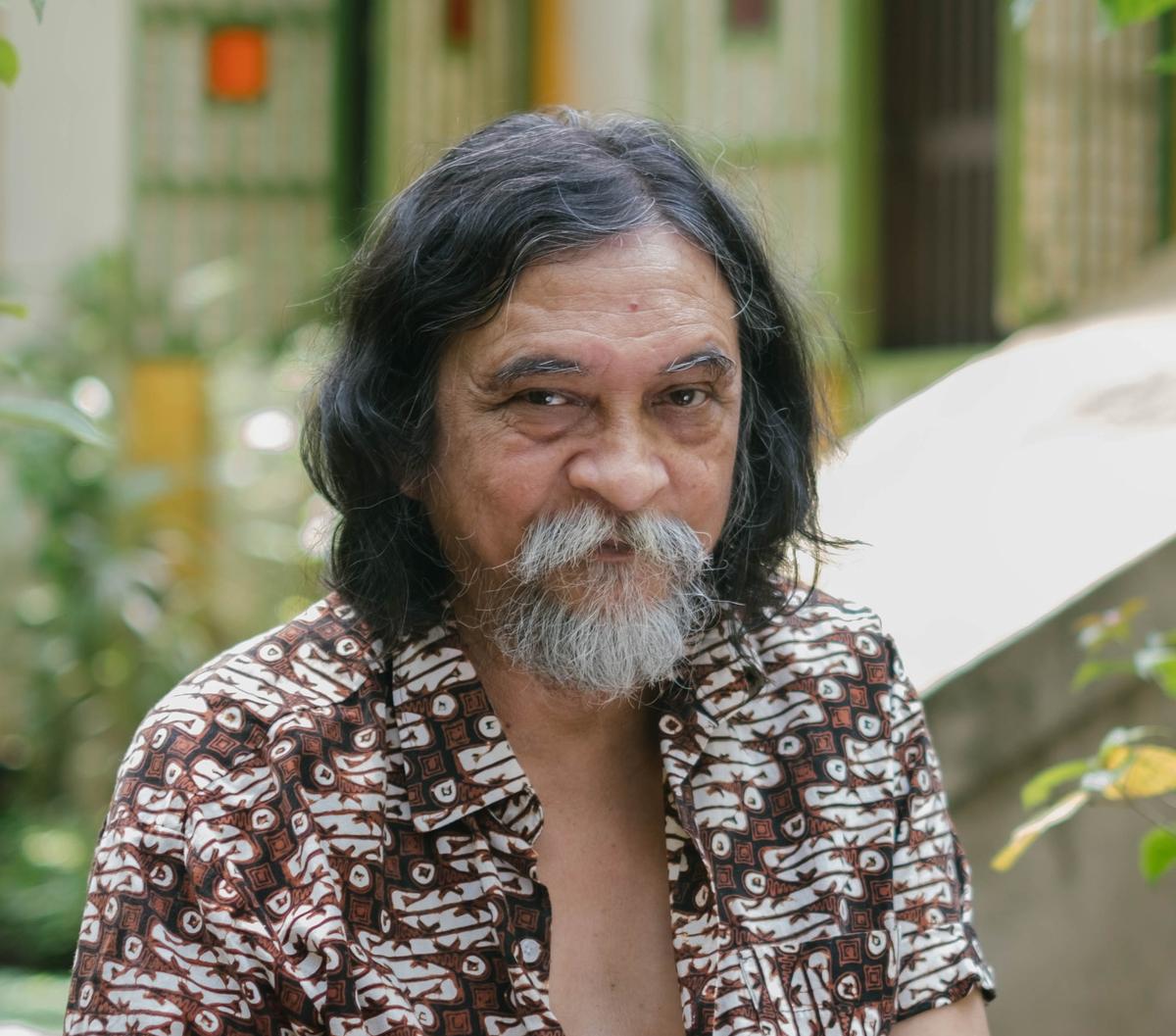
Orijit Sen
| Photo Credit:
Special arrangement
A hypermasculine approach
Globally, most leaders such as the U.S. President Donald Trump, Russian President Vladimir Putin and India’s own PM Modi have fashioned themselves as hypermasculine leaders — in their body language and responses. Guha points out that the media has declared them as redeemers, and independent thinking people have fallen prey to herd mentality. “The same hypermasculine attitude and language is reflected across political ranks and files of BJP leadership, and in the responses of the street thug that lynches, tortures, and abuses people on the margins and makes hate speeches. It is no surprise that there are such masculine responses to this situation,” he says.
This was apparent in the name ‘Operation Sindoor’, where the Indian state and its leaders projected themselves as the protectors of women. On the afternoon of May 7, when the government held its first press conference, it was addressed by Foreign Secretary Vikram Misri and two women, Colonel Sofia Qureshi and Wing Commander Vyomika Singh. They informed that ‘Operation Sindoor was launched by the Indian Armed Forces to deliver justice to the victims of the Pahalgam terror attack and their families.’ Sindoor, vermilion, is worn by many Indian women in their hair parting to indicate their married status; ceasing to wear it implies widowhood. PM Modi, in his address to the nation on May 12, repeatedly said that the military action is to seek justice for the women whose sindoor was erased.
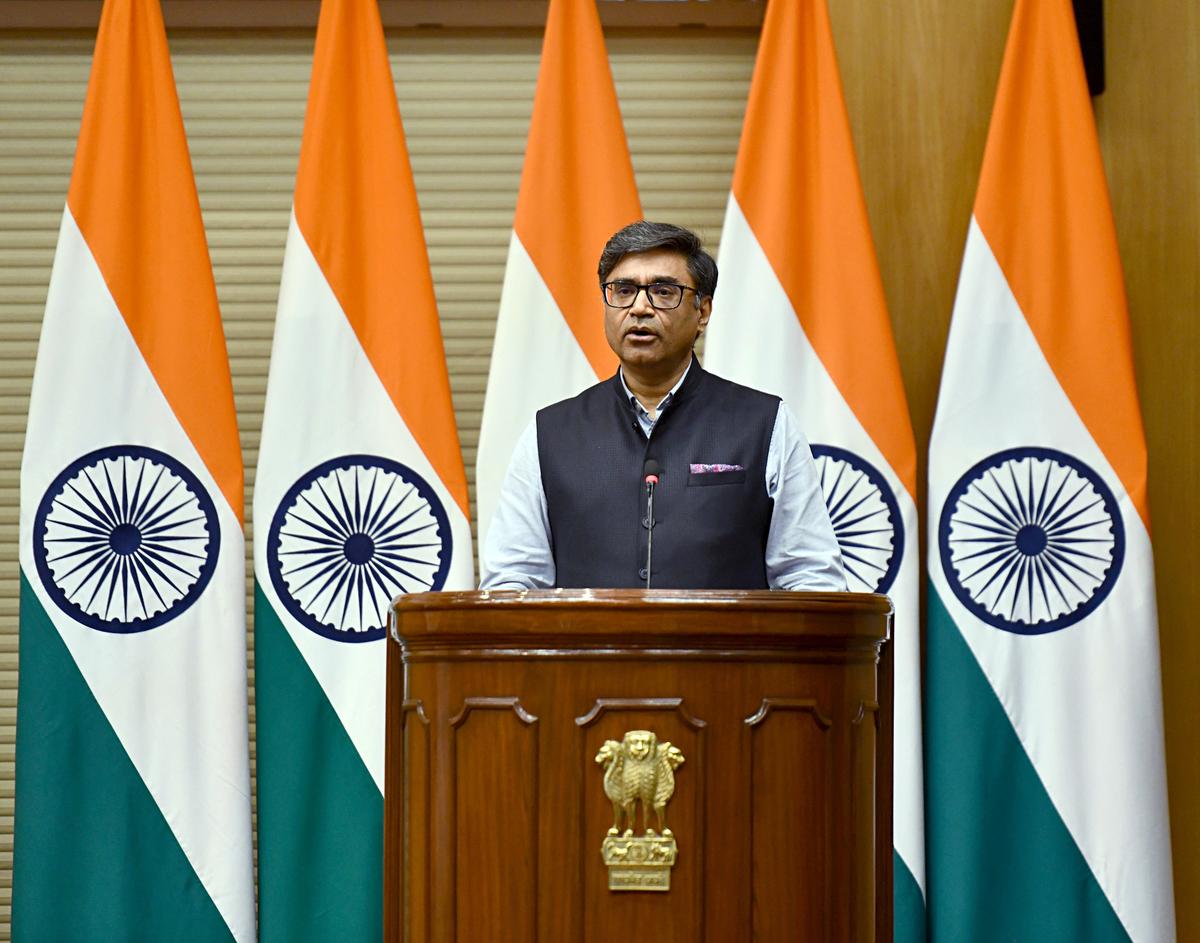
Vikram Misri
| Photo Credit:
ANI
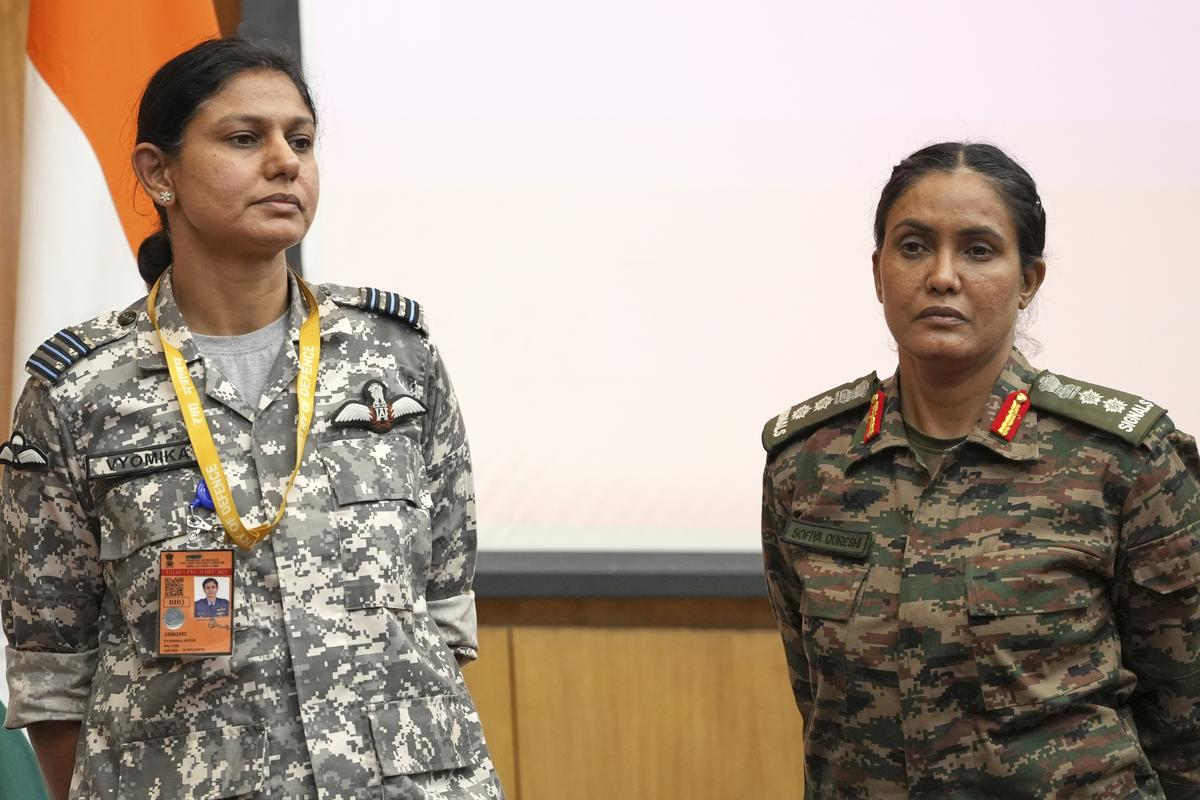
Colonel Sofia Qureshi (right) and Wing Commander Vyomika Singh
| Photo Credit:
AP
J. Devika, an academic and feminist, says, “Operation Sindoor is a hit because it upholds the fraternal social contract where women belong to men in a patriarchal system. Where killing of a man is seizing his women, in this case, the wife. Killing the husband is killing her protector. This is the base of attacking in a patriarchal society where it immediately becomes a question of honour.”
The press briefing held by two women officers avenging the sindoor of the widows of Pahalgam was also hailed as an image of the Indian ‘empowered woman’ and ‘united India’ because Colonel Sofia Qureshi is Muslim.
The Indian government takes a leaf from Israel and the U.S. in creating such optics to focus a selective approach to human rights violations. Israel has been accused of ‘pinkwashing’, trying to give itself a liberal veneer in its war on Gaza. In November 2023, a photo of an Israeli soldier with a rainbow flag in support of the LGBTQIA+ community appeared. Similarly, the U.S. sent Thomas-Greenfield and Robert A. Wood, both Black Americans, as its representatives in the UN — who have raised their hands to veto ceasefire resolutions for the Palestinian people.
Not in the name of women
The representation of women and Muslims in the press briefing did little to whitewash the oppression of women and Muslims, however, or repair the social fabric in contemporary India. An Association for Protection of Civil Rights report suggests that after the Pahalgam terror attack, between April 22 and May 8, 184 hate crimes against Muslims were reported across the country, out of which 106 were instigated in retaliation to the Pahalgam terror attack. On May 13, BJP leader Vijay Shah called Colonel Sophia Qureshi “sister of the same community as terrorists”.
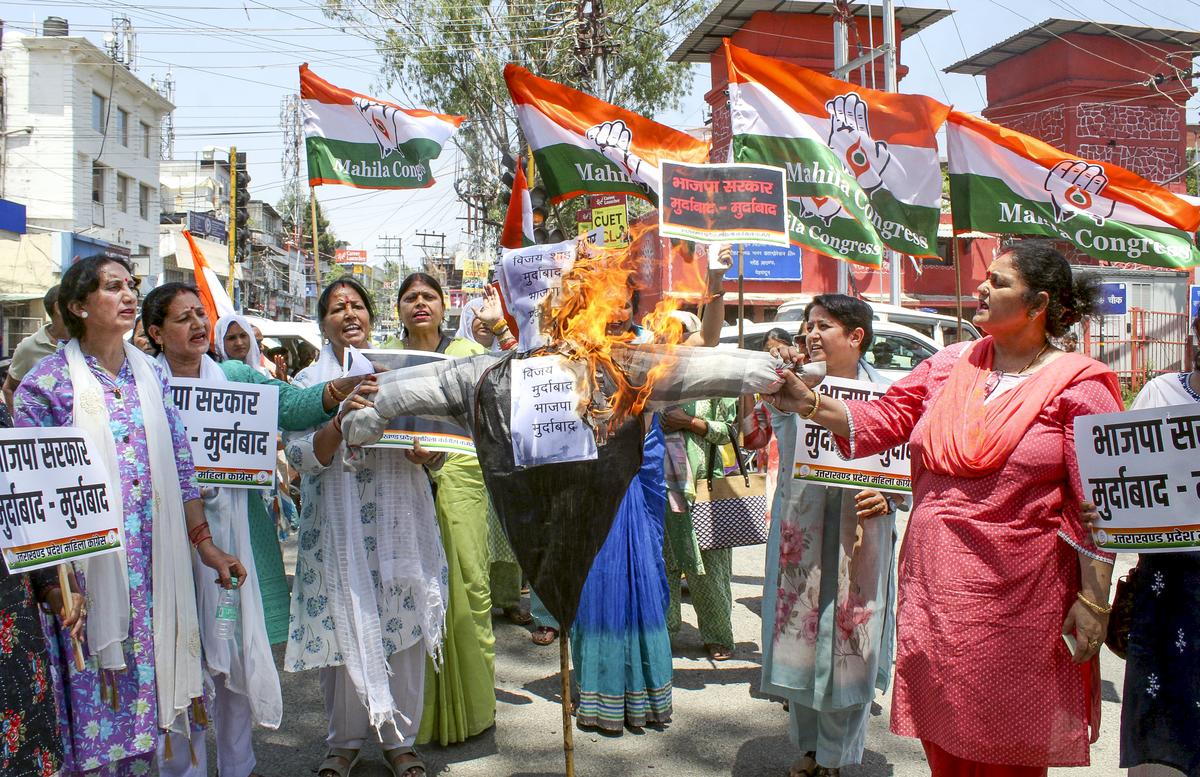
Uttarakhand State Women Congress President Jyoti Rautela and supporters burn an effigy during a protest against senior BJP leader Vijay Shah’s remarks on Col. Sofia Qureshi
| Photo Credit:
PTI
Urvashi Butalia, a feminist and publisher, says that it is worth noting that in the past, most peace-making initiatives have been made by women. Women in Black, an anti-war movement that started in Jerusalem in 1988 against the Israeli occupation of Palestine and human rights violations, now hold vigils against any manifestation of violence, militarism and war all over the world.
Similarly, in 1994, during the Nagaland conflict, the Naga Mothers Association formed a Peace Team as part of a campaign called ‘Shed No More Blood’ that actively arbitrated a truce between the Indian government and the outfit, NSCN (IM). The group exists to date.
On May 10, when India and Pakistan’s ceasefire was declared, the collective aggression of virtual war participants was visible in rejecting peaceful solutions. The same people who were talking about avenging women’s honour through Operation Sindoor began trolling Misri’s daughter, for providing legal counsel to Rohingya refugees after the Foreign Secretary announced on the government’s behalf that India and Pakistan agreed to cessation of military operations.
Amid this macho atmosphere, feminists across India and Pakistan have not just welcomed the ceasefire, but also called ‘for a dismantling of power structures that sustain violence. The logic of war — rooted in nationalism, toxic masculinity, and colonial-era borders — must be rejected.’
Butalia says, “People think war should be the first response and will fix the problem within a week. But look at the Russia-Ukraine war and Israel-Gaza. It has been years. No wars have stopped because countries ran out of ammunition. They stopped because people sat across the table, talked and signed peace accords.”
Today, reports of ceasefire violations continue, as do chest thumping WhatsApp forwards, and TV and content warriors who can’t wait for season 2.
The Delhi-based independent journalist and author covers the intersection of politics, gender, and social justice.
Published – May 16, 2025 11:18 am IST




